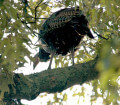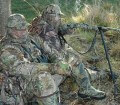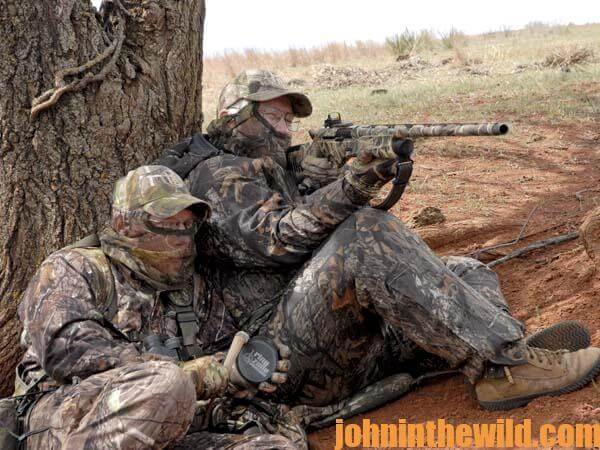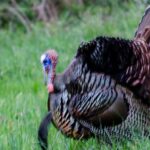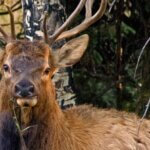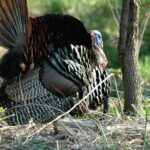John’s Note: Every gobbler is a challenge, but some are candidates for the Turkey Hall of Fame. Gobblers are individuals. Although many will do what they’re supposed to do, when and the way they are supposed to do it, some turkeys become so expert at eluding the hunter, they seem almost supernatural. These toms have advanced degrees in hunter dodging, and in my lifetime I’ve met my share of these birds. But that’s what I enjoy about the sport of turkey hunting – you never know what’s going to happen, and you’re playing against an opponent that on his turf is often as smart, if not smarter, than you are. While pursuing gobblers, I’ve also had the good fortune to hunt with and interview some of the greatest turkey hunters in America today. All agree there are some gobblers that never can be killed legally.
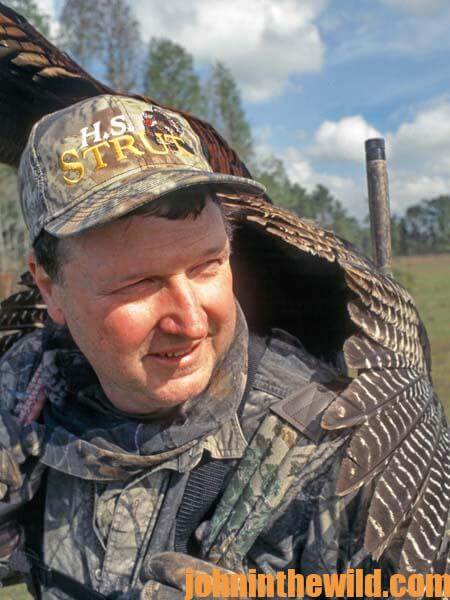 Eddie Salter and I had been hunting hard for 3 days.
Eddie Salter and I had been hunting hard for 3 days.
Although we had seen three jakes, we hadn’t even heard a longbeard, let alone had one in our gun sights. Time was running out as I had to leave for home within the next few hours. As we were driving through the countryside looking for turkeys, Salter spotted a big gobbler with a jake and some hens out in the middle of a field. “You want to try for him, John?” Salter asked. “We might as well,” I said. “Because this is the last chance we’ll have before I leave.” We slipped along the edge of the woods and watched the turkey through binoculars.
The tom was 200 yards away in a clean pasture. I knew our chances of taking this bird fell somewhere between slim and none at all. But before we could even set-up and make an attempt to call the bird, fate intervened. Someone on the other side of the field fired a shotgun. I don’t know whether they were shooting at the turkey or some other critter, but the gobbler rose straight up from the ground like a Huey helicopter, turned in midair and flew straight for where Salter and I were standing next to a pine tree. “I don’t believe this,” I whispered as the big tom shortened the distance between us. When the old gobbler was straight overhead, I squeezed the trigger on my 12 gauge, and the bird folded.
The Phantom Gobbler: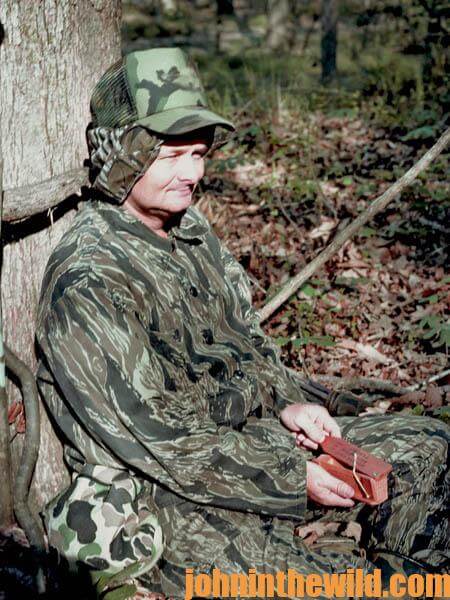
Allen Jenkins had invited me to hunt elusive white gobblers on the property of his friend, J. C. Brown. Apparently a gene in this Mississippi flock occasionally produced albino turkeys. “We’ve seen white hens on J. C.’s place before, but these three are the first white gobblers we’ve ever spotted,” Jenkins said.
Brown had protected these ghostly-white phantoms while they were jakes, until they became 2-year olds.
Although Brown and Jenkins had called to the birds when they were jakes, they had chosen not to bag the phantoms until they were mature birds. The plan was for Brown and myself each to try to take one of the birds when the gobblers were 2-years old. We would leave the third gobbler. The first morning we hunted the white gobblers, we didn’t see them. But the second morning, we found them feeding in a field. “There are only two birds,” Brown said. “There should be three, but I’ve never seen them when all three gobblers were not together.
Someone must have killed one of the birds.
” don’t want to take either one of the remaining white gobblers until I find out what happened to the third turkey.” That afternoon, the game warden called Brown’s home and reported that an adjacent landowner had taken one of the white gobblers when the bird crossed Brown’s property line. The killing of one of the albinos upset Brown so much he asked us not to take either of the other two white birds. Later we were able to call them and watch them for about 45 minutes. Those white gobblers were the most-unusual wild turkeys I ever had seen.
 Hunting the wild turkey is a challenge, but it’s also far more.
Hunting the wild turkey is a challenge, but it’s also far more.
Toms easily taken are soon forgotten, but those wood wizards, the wily birds with the long beards and sharp spurs, the ones with mystical, elusive powers that can drive hunters insane are the ones we all remember. They are the masters of the art of dodging hunters.
To get John E. Phillips’ latest Kindle book, “How to Hunt Turkeys with World Champion Preston Pittman,” click here.
About the Author
John Phillips, winner of the 2012 Homer Circle Fishing Award for outstanding fishing writer by the American Sportfishing Association (AMA) and the Professional Outdoor Media Association (POMA), the 2008 Crossbow Communicator of the year and the 2007 Legendary Communicator chosen for induction into the National Fresh Water Hall of Fame, is a freelance writer (over 6,000 magazine articles for about 100 magazines and several thousand newspaper columns published), magazine editor, photographer for print media as well as industry catalogues (over 25,000 photos published), lecturer, outdoor consultant, marketing consultant, book author and daily internet content provider with an overview of the outdoors.

